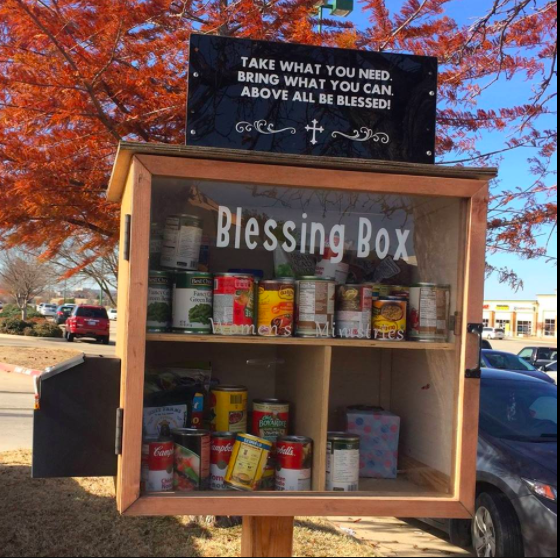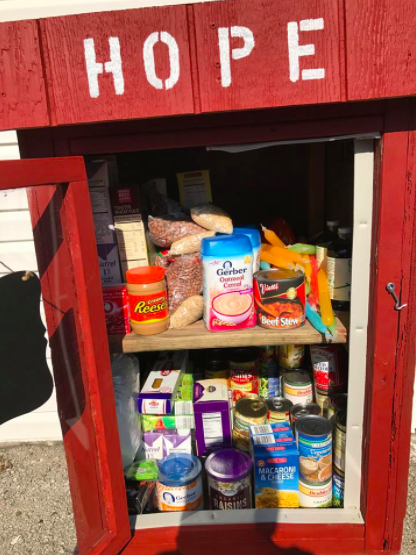
Screen Grab from Facebook/Blessing BOX
Faith in humanity has indeed been restored.
A man from Watertown, New York, USA, built a wooden cupboard-shaped box in front of his yard and stocked it with nonperishable food to help out people in need.
According to Watertown’s local publication The Eagle, the “Blessing Box” was made possible by a concerned town resident named Roman Espinoza.
The box is stocked with nonperishable food items which Espinoza collected from neighbors, friends and local businesses, in hopes of providing free food for people in need around the area.
Completely unattended, the label on the box reads: “Take What You Need. Bring What You Can. Above all, Be Blessed.” Those less fortunate can simply take whatever food item they want, while those with plenty are encouraged to put in whatever they can donate.
Espinoza’s blessing box has received a positive response from the community and claimed that “A lot of people are using it.”
The retired Fort Drum soldier and current chemical dependency student at Jefferson Community College (JCC) regularly checks the contents of the “Blessing Box” and found that people have left all sorts of good items.

Screen Grab from Facebook/Blessing BOX
Others, meanwhile, can’t help but wonder how he keeps the food from being stolen.
“It’s free,” replied Espinoza to the inquiries. “You can’t steal it if it’s free. If you need it, it’s here.”
“Blessing Boxes” have been popping up around the United States in recent months—mostly around churches and nonprofit organizations. To this day, no one is quite sure where it all began.
As for Esponoza’s case, he and his wife was inspired by a story and decided to make their own. He also took a cue from the JCC’s Food Closet program that helps students in need, the report said.
He also assured that the Blessing Box in front of his yard will always be available for anyone in need.
“I want to get the word out it’s here to use,” he said.
Meanwhile, the Blessing Box’s concept is similar to the “Little Free Libraries” that picked up steam in the Philippines a few years ago. These can also be seen in malls and certain places around Metro Manila. Alfred Bayle/KI
Instead food for thought, the Blessing Box provides food for the belly. Image: Facebook/@LittleFreeLibraryPhilippines

